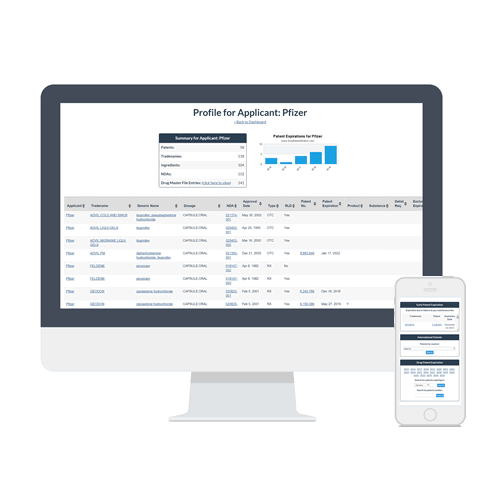
The pharmaceutical industry is a high-stakes arena where innovation, investment, and intellectual property (IP) protection intersect. One of the most critical decisions pharmaceutical companies face is the timing of their patent filings. Traditionally, companies have filed patents early in the research and development (R&D) process to secure their intellectual property. However, a growing body of evidence and expert opinion suggests that filing patents later in the R&D process can offer significant strategic advantages. This article explores the reasons behind this shift, supported by insights from industry experts and real-world examples.
Table of Contents
The Traditional Approach to Patent Filing
Pharmaceutical companies have historically filed patents soon after discovering a new drug or its novel mechanism of action. This early filing is driven by the need to protect their substantial investments in R&D, which can take up to 15 years before a product reaches the market[1]. The patent system grants a 20-year exclusivity period, but with lengthy development and regulatory approval processes, the effective market exclusivity can be significantly reduced.
The Case for Later Patent Filing
Filing patents later in the R&D process can maximize the period of market exclusivity, thereby enhancing the commercial value of the patent. Alex Trimble, a member of IAM, argues that “clinical trial-related patents should be filed later in the process” to avoid prematurely starting the patent term clock[5]. This strategy ensures that the patent term aligns more closely with the product’s market entry, providing a longer period of exclusivity and higher potential returns on investment.
Benefits of Delayed Patent Filing
Extended Market Exclusivity
By delaying patent filings until after the start of Phase II clinical trials, companies can extend the period during which they hold exclusive rights to market the drug. This approach is particularly beneficial given the high costs and risks associated with drug development. As Dr. Peter Feldschreiber, a barrister specializing in pharmaceutical law, explains, “Drug research and development is a high-risk investment for the pharmaceutical company”[1]. Extending market exclusivity helps companies recoup these investments more effectively.
Reduced Risk of Patent Invalidation
Filing patents later can also reduce the risk of patent invalidation due to public use or prior art. According to Trimble, “The delay does not increase the risk of invalidation for public use, but maximizes the exclusivity and value provided by the patent”[5]. This conservative filing strategy ensures that the patent is robust and less vulnerable to legal challenges.
Industry Examples
Several pharmaceutical companies have successfully implemented later patent filing strategies. For instance, the Initiative for Medicines, Access & Knowledge (I-MAK) found that the 12 best-selling drugs in the US in 2017 had an average of 38 years of exclusivity, almost double the original 20-year patent protection[1]. This extended exclusivity was achieved through strategic patent filings and additional market barriers.
Challenges and Considerations
While the benefits of later patent filing are clear, this approach is not without challenges. Companies must carefully balance the need for early IP protection with the advantages of extended market exclusivity. Additionally, the timing of patent filings must be coordinated with regulatory requirements and market entry strategies.
Expert Opinions
Industry experts emphasize the importance of a strategic approach to patent filing. Feldman, a researcher who has extensively studied pharma patent practices, argues that “the cycle of innovation, reward, then competition is being distorted into a system of innovation, reward, and then more rewards”[1]. She advocates for a “one-and-done approach” to patent exclusivity, which aligns with the strategy of later patent filings.
Conclusion
The timing of patent filings is a critical strategic decision for pharmaceutical companies. Filing patents later in the R&D process can extend market exclusivity, reduce the risk of patent invalidation, and enhance the commercial value of the patent. As the industry continues to evolve, companies must carefully consider their patent filing strategies to balance the need for IP protection with the goal of maximizing returns on their substantial R&D investments.
Pullquote
“Filing patents later in the R&D process can maximize the period of market exclusivity, thereby enhancing the commercial value of the patent.” – Alex Trimble
Cited Sources
- Pharmaceutical Technology. “Exploring companies’ manipulation of pharma patents.” 2019-11-11.
- Minesoft. “The Role of Patents in the Pharmaceutical Sector.”
- NCBI. “Strategic Patenting by Pharmaceutical Companies – Should … – NCBI.” 2020-10-28.
- Alacrita. “Pharmaceutical Patents: an overview.”
- Mintz. “Why Pharma Companies Should File Clinical Trial-Related Patents Later in the R&D Process.” 2023-03-31.
Citations:
[1] https://www.pharmaceutical-technology.com/features/pharma-patents-manpulation/
[2] https://minesoft.com/the-role-of-patents-in-the-pharmaceutical-sector/
[3] https://www.ncbi.nlm.nih.gov/pmc/articles/PMC7592140/
[4] https://www.alacrita.com/blog/pharmaceutical-patents-an-overview
[5] https://www.mintz.com/insights-center/news-press/why-pharma-companies-should-file-clinical-trial-related-patents-later-rd


